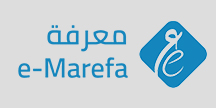The Effect of Using Kagan's Structure in Knowledge Achievement and Self-esteem in the Kurdish Literature by Eighth-Grade Basic Students
DOI:
https://doi.org/10.21271/zjhs.26.6.15Keywords:
Kagan Structure, nowledge achievement.Abstract
The aim of this study is to find out the effect of using Kagan's structure in knowledge achievement and self-esteem in the Kurdish literature by the eighth-grade basic students.
The researchers relied on the balanced design which includes two groups, the experimental group which they study through Kagan's structure, and the control group which they study normally. The research population includes eighth-grade students of basic schools at the centre of Erbil in 2021-2022. The researchers chose Bamok Basic School, they selected two groups randomly, the students were distributed into two groups; Group A was the control group which they were 22 students, and group B was the experimental group which they were 21 students. The researchers found out the balance between both groups from the variables (student age in months, education level of students' parents, results of Kurdish-language subject in the previous year, self-esteem scale).
The research tools are self-esteem scale that the researchers relied on the scale (Halo, 2014) which included 46 items and divided into (3) alternatives; the second tool was knowledge achievement test, for this, they relied on the achievement test (Muhammad, 2015) the question types were (multiple choice, true or false) The number of questions was 28. The researchers verified both research tools by giving them to a number of experts and professionals, as well as the stability of both tools was achieved by retest in which the stability scale in self-esteem was (0.78) and the stability of the test was (0.80). After implementing the tools and extracting the results using T.test, the researchers came to the following conclusions:
- There is a significant difference at the level of (0.05) between the average score on self-esteem scale in pre- and post-test of the experimental group, which they study the subject by following Kagan’s structure.
- There is a significant difference at the level of (0.05) between the average score on self-esteem scale in pre- and post-test of the control group, which they study the subject normally.
- There is a significant difference at the level of (0.05) between the average difference score on self-esteem scale in post-test of the experimental group, which they study the Kurdish Literature by following Kagan's structure, and the average score on self-esteem of the control group they study the subject normally.
- There is a significant difference at the level of (0.05) between the average difference score of the experimental group, which they study the subject by following Kagan's structure, and the average score of the control group which they study the subject normally in knowledge achievement test.
In the light of the results, the researchers presented some conclusions and recommendations and suggestions that generally emphasize on the use of new methods, including the Kagan's structure in teaching Kurdish Literature and building self-esteem in students, as well as the researchers gave some suggestions.
Downloads
Published
How to Cite
Issue
Section
License
Copyright (c) 2022 Zanco Journal of Humanity Sciences

This work is licensed under a Creative Commons Attribution-NonCommercial-ShareAlike 4.0 International License.
Except where otherwise noted, content on this site is licenced
under a Creative Commons Attribution License 4.0 (CC BY- 4.0)










